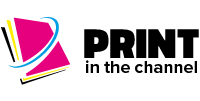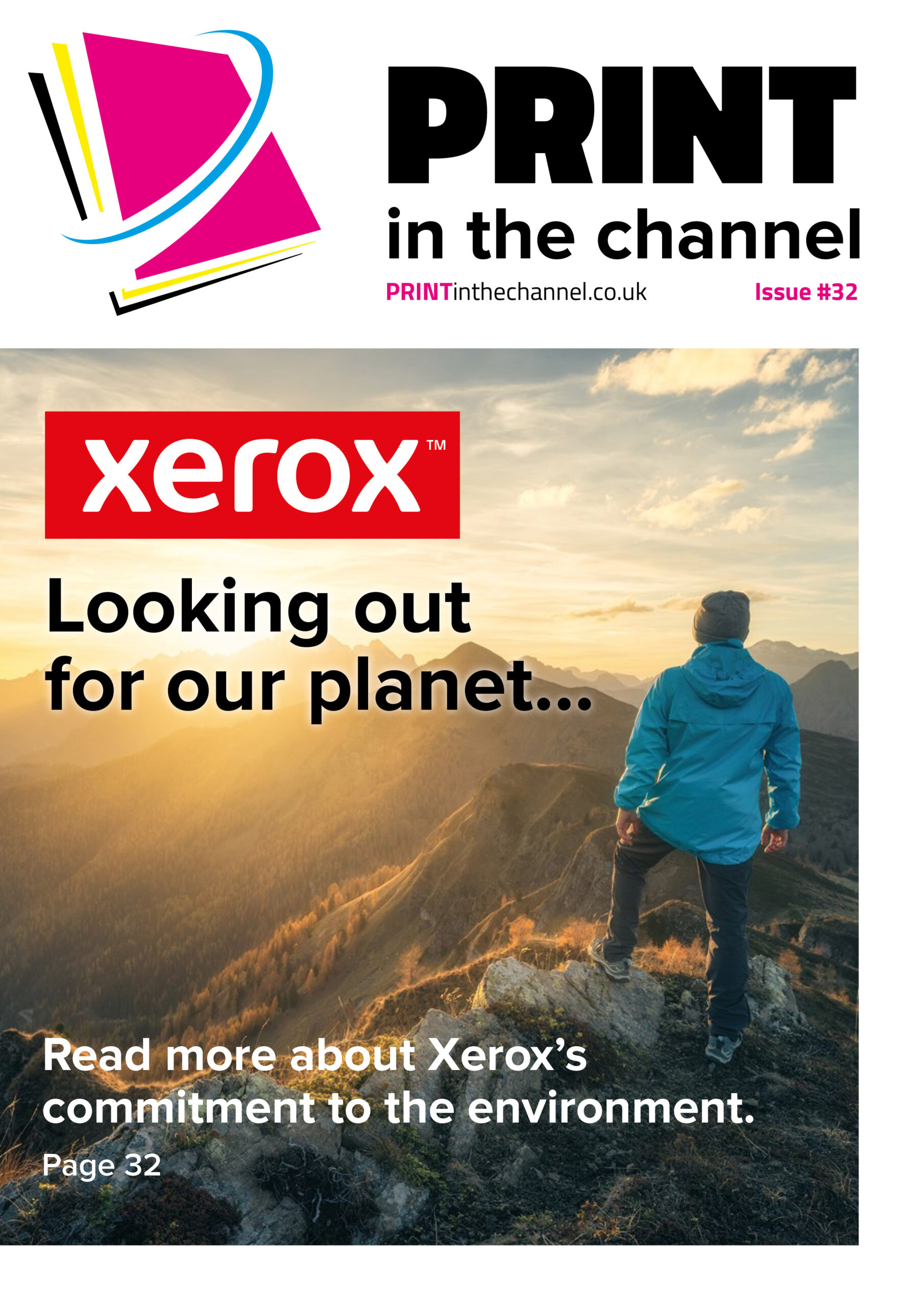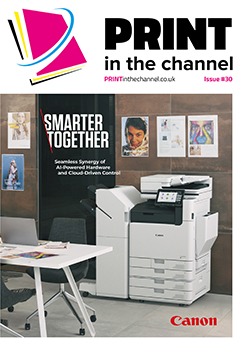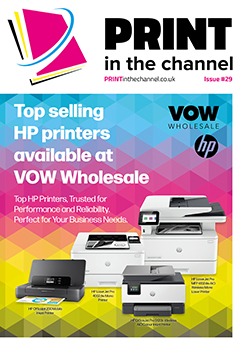Kyocera has recently launched five new A4 multifunction printers, designed to meet the needs of busy workgroups, but also their demands for sustainability – something that the company devotes a lot of resources to.
With demands for efficiency in business increasing, it is putting emphasis on all aspects of a business to find ways to increase productivity, as well as saving on cost and environmental impact – including the print fleet.
Printer manufacturers have responded and to this end, Kyocera Document Solutions UK recently launched five new high-performance workgroup A4 colour multifunction printers (MFPs) and two workgroup A4 colour single function printers. Six are from Kyocera’s ECOSYS series: the PA3500cx and PA4000cx, and MA3500cix, MA35000cifx, MA4000cix and MA4000cifx. The seventh is the latest addition to the TASKalfa suite of devices, the TASKalfa MA3500ci.
These MFPs have been developed to meet the needs of busy workgroups, while ensuring consistent performance, low running costs, reduced energy usage and enhanced security. All the devices are delivered carbon neutral as standard and incorporate Kyocera’s long-life ceramic drum technology, to drive down total cost of ownership and help businesses embrace sustainable printing.
“Compared to the previous products, the printers we’ve just launched have been revamped and restyled,” says Kyocera’s product marketing manager, Peter Dresser. “For instance, they have a tablet-style user interface, which is in common with our A3 series products. We have also increased the print speed, so they can print 35 or 40 pages per minute, up from 30.
“We’ve also put dual scan document processes on all these machines, to help make people more productive. They can also integrate with document management solutions, and work with products from companies like PaperCut and MyQ, which is important for the education sector, particularly.
“We have also introduced K-level security, our highest level of security, which was previously only found on A3 products. We’ve put a lot of features now into the A4 products to give a common look and feel across the range.”
High security
Trevor Maloney, fellow product marketing manager at Kyocera, adds that the K-level security has been tested by ethical hackers who couldn’t gain access to them. “This level of security will be in all new products going forward,” he adds. “Therefore, as an endpoint, we can consider these to be secure products and very hard for somebody to access a network via these MFPs.”
Steve Pearce, group head of marketing at Kyocera UK, adds that this represents a shift in the market – that printers are now referred to as an endpoint. “That’s a seminal moment,” he says. “That’s the realisation that these are network endpoints, they are vulnerable entry points for cybercrime, and at Kyocera we take it incredibly seriously.”
Steve adds that the declination between office-based and home-based printers has reduced due to the risk in hybrid working. “We’ve deployed the more office-based features onto our home devices to make them familiar to users and easier to manage. They’re faster, slicker and smarter. And they are greener too; the products are all carbon neutral. The products are sustainable by design, as the name of our product range – ECOSYS – suggests. It’s something that we’ve been doing for a long time.”
Carbon neutral
As Steve says, the printers are carbon neutral, and he is careful to explain what this means. “There is a fear of being accused of greenwashing and that all you’re doing is carbon offsetting and planting trees,” he says. “Well, yes, we are planting trees and offsetting our devices, but we’re also delivering them in fully cardboard packaging. Unlike some of the players in our market, there’s no polystyrene. We offset all the production of the machines. They’re made of 30% recycled plastic and they’re 99.1% recyclable after use. We have a toner return scheme that we’ve moved to the UK from Germany and a machine recycling system as well, so we try to complete that circle for the devices.
“We have offset the device itself and five years’ worth of consumables for it. Peter and Trevor have analysed what the machine does in field for five years so not only have we offset the machine and the power used to make that machine, but also the consumables it uses.
“Also, on the ECOSYS printers empty ink cartridges come out and become the waste toner bottle. It’s all about recycling and reuse and we have that inbuilt technology in our machines.
“I will happily stand up and say our machines are greener than Johnny Sexton’s socks. We are confident that the technology is good, and these new printers are more sustainable than those that have come before.”
Peter adds that Kyocera has long been at the cutting edge of sustainability with its long-life components, drum units and the like. “Now, all our products are certified to the latest standards, which looks at every environmental aspect of the product, including how it’s designed and manufactured,” he says.
“Also, all our products now come with a cardboard packaging or reused pulp packaging, which has been specifically designed to not require staples. The packaging, which can be flat packed down after use, is 100% recyclable. We don’t even use wooden pallets, they’re all cardboard. It’s a lot easier to get rid of a cardboard pallet than a wooden one.”
He also notes that the printers use as little as 0.5 watts in sleep mode. “Products spend most of their life in sleep mode, be it overnight or the quiet times in the office. We have timers in the machines which customers can set if they’re using them quite a lot, then they can go into sleep mode quickly. In addition, we have a Power Save button, which put a machine straight into sleep mode.
Other aspects of the printers also use less energy than previously. Trevor adds that the toners used in the printers have been designed to melt a much lower temperature than others. “This means there’s less energy being used when you’re printing or copying because the toner melts at a lower melting point,” he says. “Every product we bring out has a lower energy value than its predecessor product. The guys who design these back at the factory are really on it from an environmental point of view, trying to reduce energy consumption, which is key with the current energy crisis.”
Broad appeal
The printers are aimed at businesses in all sectors, as well as homeworkers. “The root cause for a need for a printer, copier and scanner is often the same,” says Steve. “People using it might be wearing a different uniform or be of a different age group or demographic, but the innate need to print something out, scan it back in and potentially add value to that document be that through metadata or where you’re sending it is the same.”
The printers have also been designed with an eye on aesthetics, which has become more of a factor as hybrid working has become more popular. “My bedroom is now my office and the last thing I want is, if I’ve spent a lot of money on that bedroom to make it a nice, an ugly printer,” says Steve. “Size matters too because home offices are often not as spacious as those found in workplaces.
“Importantly, it is also wireless, so people can print from anywhere to the device no matter where they are working.”
Peter adds that the new printers also work well as work group machines. “We have high pass enabled models and we tend to sell a lot of them into schools, healthcare trusts and universities, where they can run document management software on them and lock them down,” he says. “If they’re in high traffic areas where lots of people are walking around who you don’t want to have access to your machine, you protect it. But they can be used by home workers or large corporates alike. Basically, these are for people who want high-quality coloured documents but to keep running cost low. And that’s where we these are desktop machines.”
Well received
Since launch, the new range of printers has been received well by the market, according to Steve. “We are seeing a switch back to MFP,” he says. “If you are working from home or remotely, you need that Swiss Army knife of an MFP. In the office, you may have access to a copier and a printer that prints high quality. If you are at home, you want the same, so I think demand for multifunctional products will continue to grow.”
Peter adds that the products are now available in the dealer channel. “We are working with resellers promoting the products through them, including new features like increased speed and better security,” he says. “Resellers are also really buying into the sustainability credentials of the products, as, especially when bidding for big tenders, it’s differentiating our products, because speeds and feeds, you’ve got to be comparable to the competition, but having this sustainability message has given us an edge.”
Getting involved
Resellers that want to sell these printers can get in contact with the Kyocera team. “We have a dedicated team of channel support team that look after resellers,” says Steve. “We offer an account management basis and if anyone is interested in talking to us about adopting Kyocera products into their portfolio, they should get in contact. We have reps all over the country who can advise you and begin that relationship.
“We’re always actively looking for new partners. We believe as a sales and marketing function, we are doing more. Within my team we recently helped a customer to improve their website SEO and how to become more ecommerce savvy. My team have even helped partners with how to use LinkedIn to become bigger and better and attract the customers they want.
“We also supply customers with what I call ‘Pot Noodle’ marketing, so they just add their logo and call to action. We have got all the key messages to their potential customers so they can become a partner with us, which gives them access to that. At Kyocera we actively work with our partners in a sales enablement function.”










